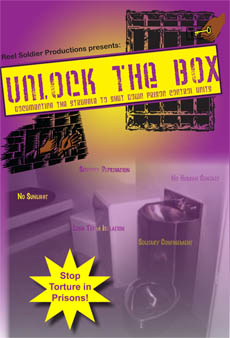
Calipatria Hunger Strikers United for Week Long Protest
I’m writing to report on the hunger strike from Calipatria State Prison. Everyone here on the facility showed their support. Not all of us agreed on the tactics that some chose to pursue but nonetheless we all participated. Some people refused to go to work while others chose only not to accept food. Everyone who chose not to go to work received write ups (CDCR 115) for refusing to work and participation in security threat group (STG) activity. So now those people have STG points against them. Some guys were trying to force everyone not to work but calmer heads prevailed and they allowed people to make the choice themselves.
Out of the 850 prisoners on this yard, at least 700 participated. It only lasted for a week. The staff passed out a flyer on what can happen medically to a person who goes without food for long periods of time. They sent the nurse from door to door asking if people were alright but it didn’t get to the point where they had to start weighing people.
A lot of questions are now being asked like what did that accomplish? Although we had a high level of participation we had no one to actually explain what the strike was for or what are the goals we are trying to accomplish. Most guys just get involved because they were told to. The people who are socially conscious and politically conscious didn’t want to speak up for fear of being labeled as inciting the strike which will land you in the SHU. A lot of guys who have been down for 30 years have been broken and refuse to stand up to the administration.
All in all we here at Calipatria showed our support until next time.
MIM(Prisons) responds:First let us recognize what this comrade said about prisoners receiving STG points against them for a peaceful refusal to eat or go to work. This is what the CDCR is using to label people a Security Threat Group member and put them in torture units for years or even decades - the main thing that the strike is protesting in the first place! Such outrageous injustice should fuel the struggle for basic humyn rights in Calipatria.
Second, let’s acknowledge the amazing accomplishment of having 700 out 850 prisoners participate in a united action that was part of a planned strategic approach towards change in the interests of all prisoners. This is historic, and it is happening all over California!
That said, the masses are correct to ask, “What did this accomplish?”
This report exposes the importance of building political
consciousness and educating our comrades behind bars both before and
during protest actions. We must build leadership to ensure that the
political message of these protests is effectively conveyed, both to
those participating and to the target of our protests.
Of course, the application of leadership in such closely monitored conditions should be done cautiously as the comrades in Calipatria did. Materials like Under Lock & Key can be tools for spreading education and providing leadership. But even then we face censorship, and prisoners get written up just for possessing literature, which presumably was given to them by prison mail staff in the first place. The solutions to this are tactical questions that should be part of the sum up of the experiences in California prisons this summer. As the masses are struggling for answers, now is the time to step in and have these discussions however you can in your locality. What is the opinion of the actions? What do people think should have been done differently? How did leadership fail, and how could you build differently in the future? If you come up with universal conclusions send them to us to share, however as conditions vary over time and place, most of these conversations should be applied locally.
On the large scale we can make a few points. First, the strike was about ending conditions of torture in California prisons, in particular in the long-term isolation units (SHU, ASU, etc.). And the strike continues with almost 300 people having not eaten for over 40 days according to the CDCR, and an unknown number of others still participating who are not being counted. So the struggle continues there.
If comrades in Calipatria are asking what their one-week actions accomplished, we encourage them to look back at the agreement to end hostilities and the United Front for Peace in Prisons statement on page 2 of Under Lock & Key that were used to form a basis for the massive support seen this time around. The goals of these projects are to unite prisoners around their mutual interests as prisoners and prevent the state from pitting them against each other as a form of social control. We hope that comrades in Calipatria were inspired by the tremendous level of solidarity this author reports on. There are many ways to build on this unity through things such as study groups, health campaigns, literacy programs, and other forms of mutual support. In our own work we model such programs after the Black Panthers and Chinese Serve the People Programs, which had the purpose of providing for survival needs pending revolution.





 Alabama
Alabama
 Alaska
Alaska
 Arizona
Arizona
 Arkansas
Arkansas
 Army Post
Army Post
 California
California
 Colorado
Colorado
 Connecticut
Connecticut
 Delaware
Delaware
 District of Columbia
District of Columbia
 Federal
Federal
 Florida
Florida
 Georgia
Georgia
 Guam
Guam
 Hawaii
Hawaii
 Idaho
Idaho
 Illinois
Illinois
 Indiana
Indiana
 Iowa
Iowa
 Kansas
Kansas
 Kentucky
Kentucky
 Louisiana
Louisiana
 Maine
Maine
 Maryland
Maryland
 Massachusetts
Massachusetts
 Michigan
Michigan
 Minnesota
Minnesota
 Mississippi
Mississippi
 Missouri
Missouri
 Montana
Montana
 Nebraska
Nebraska
 Nevada
Nevada
 New Hampshire
New Hampshire
 New Jersey
New Jersey
 New Mexico
New Mexico
 New York
New York
 North Carolina
North Carolina
 North Dakota
North Dakota
 Ohio
Ohio
 Oklahoma
Oklahoma
 Oregon
Oregon
 Pennsylvania
Pennsylvania
 Puerto Rico
Puerto Rico
 Rhode Island
Rhode Island
 South Carolina
South Carolina
 South Dakota
South Dakota
 Tennessee
Tennessee
 Texas
Texas
 Utah
Utah
 Vermont
Vermont
 Virginia
Virginia
 Washington
Washington
 West Virginia
West Virginia
 Wisconsin
Wisconsin
 Wyoming
Wyoming
